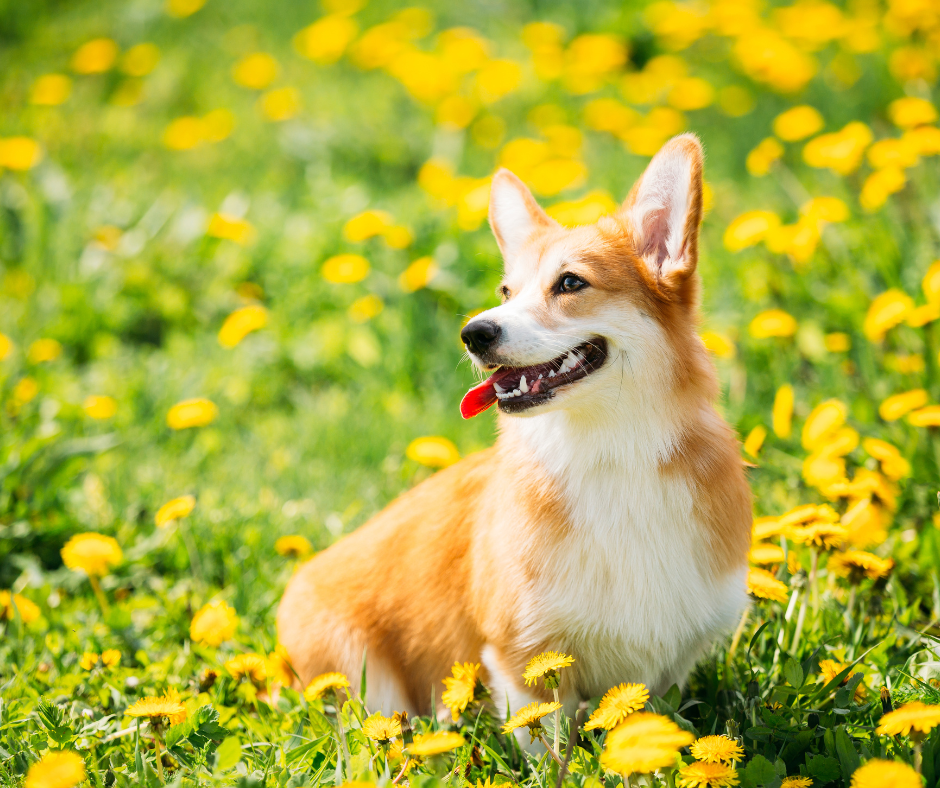Keep Cool and Stay Safe: Sizzling Tips to Protect Your Pets and Beat the Heat this Summer

As the summer sun finally graces us with its warmth and brightness, it’s essential to remember that our pets may need extra care to stay safe and healthy during this time of year. With temperatures set to rise, follow our guide to keep your pets safe, cool, and comfortable this summer. We are a certified Fear Free veterinary practice.
Beat the Heat:
Pets love their outdoor time, whether romping in the park, exploring the neighbourhood, or lounging in the garden. Create shaded spots outside with umbrellas or canopies and consider bringing them indoors during peak heat, using fans and cooling mats for extra comfort. Cats may find cozy spots in conservatories or greenhouses, so check these to avoid accidental lock-ins. For smaller pets, move outdoor hutches to shaded areas or indoors for sun protection.
Keeping pets hydrated is crucial in summer; provide fresh water and refill it frequently, especially for smaller animals prone to dehydration. Regular grooming, like brushing, helps pets stay cool by removing excess fur and preventing matting, which can trap heat close to the body. Consult us or a professional groomer for personalised grooming tips specific to your pet.
Walks and Exercise:
During summer, pavements, paths, and even artificial grass can become scorching hot, causing painful burns to your pet’s paw pads. Walk your dog during cooler times of the day, such as early morning or late evening, and test the surface temperature with your hand before venturing out. If it’s too hot for your hand, it’s too hot for their paws.
During the hotter times of the day, try some boredom-busting activities indoors to keep your pet occupied. Play ‘hide and seek’ or ‘sniff and search’ with their favourite treat or toy. Hide yourself, small treats, or toys around the house and encourage your pet to search and discover them. You can even scatter their meals in smaller amounts around the house, or in their hutch or run.
Road Tripping and Summer Holidays:
One of the most critical summer safety reminders for pet owners is to never leave them unattended in a hot car, even for a few minutes. On a warm day, temperatures inside a parked car can skyrocket to deadly levels within minutes, even with the windows cracked ajar. And it’s not just cars – caravans and motorhomes can heat up just as quickly!
While the beach may seem like the perfect summer destination for you and your furry companion, remember that hot sand can also cause burns to your pet’s paw pads. Additionally, discourage your dog from drinking sea water, as it can lead salt toxicity. Sea water contains a high concentration of salt (sodium chloride) which can lead to vomiting, diarrhoea, dehydration, lethargy, and incoordination if consumed in large quantities. Instead, provide plenty of fresh water for them to drink and rinse any saltwater from their fur after swimming.
If your pet is joining you on your holiday, it’s always good practice to familiarise yourself with the local vets in the area in case of an emergency. Take note of their phone number and address and keep it handy to refer to if you need to.
Swimming and Water Safety:
Swimming can be loads of fun especially in the scorching summer heat. But whether it’s the sea, lakes, rivers, or reservoirs, always be cautious around bodies of water. Before allowing your dog to dive in, scan for potential risks like strong currents, sharp rocks, or branches that could snag collars or harnesses. Consider using a doggy life jacket for added safety and let them take breaks when swimming. Setting up a paddling pool in your garden is a fun alternative for your dog to splash around safely.
Some pets love swimming, others prefer to dip their paws in the shallows or keep their paws firmly on dry land. Always supervise your pet near water and don’t push them to do anything they don’t want to. After any dip, ensure you rinse and dry your pet of excess water to stop any skin health related issues. If they’re not keen on swimming, no worries – there are plenty of other ways to keep them cool and active.
Blue-Green Algae:
Cyanobacteria (also known as blue-green algae) are microscopic bacteria found in freshwater lakes, streams, ponds, and stagnant waters. Blooms of these bacteria occur in warmer months and can look like scum or foam on the surface, or a bluish-green tinge to the water. Some blue-green algae can produce toxins that can affect pets who swim in or drink from the contaminated water. Unfortunately, there is no antidote for the toxins, and just a few mouthfuls may result in organ failure and fatal poisoning within minutes to hours. Symptoms include difficulty breathing, vomiting, diarrhoea, weakness, disorientation, and seizures.
Never let your dog swim in or allow any pet to drink from water sources that could be contaminated by blue-green algae. If your pet has been in contact with potentially contaminated water or shows any of the signs above, it’s crucial to seek immediate veterinary attention.
BBQ Dangers:
The irresistible smells of BBQs can entice our pets, especially cats and dogs, into trouble. BBQ favourites like sausages, burgers, and chicken drumsticks are high in fat, so they’re not always suitable for our pets. This high fat in BBQ meats can cause dietary upsets and inflammation of the pancreas (pancreatitis), while bones, corn on the cob, and kebab skewers are especially hazardous for choking or causing life-threatening blockages in the stomach and intestines.
Ensure that your pet stays away from flames and hot grills to avoid burns or accidents and consider moving pets away from BBQ smoke, which can be very irritating for their lungs, especially for small pets and birds. You may need to temporarily move their enclosure, so they are totally away from the smoke. While the joys of a BBQ gathering can be fun, some pets may find it quite stressful. Create a quiet retreat indoors or away from the commotion where they can retreat from the hustle and bustle of the party.
Sunburn and Sunscreen:
Pets, especially those with light or thin fur, are susceptible to sunburn from prolonged exposure. This can lead to serious issues like skin cancer. Look out for pink, swollen, or blistered skin, along with crusting, flaking, or itching.
Apply pet-safe sunscreen to areas exposed to the skin such as the nose, the ear tips and furless areas. It is safest to use sunscreens developed for animals on your pets. Cats are particularly at risk from some of the components in human sunscreens and even some sunscreens that are considered safe for dogs and horses may not be safe for cats.
If your pet has severe sunburn or appears to be in pain, you should contact us for advice immediately. You should also always speak to us if you are concerned your pet has signs of skin cancer.
The Bugs and the Bees:
Curious dogs and cats are at risk of getting stung by insects in summer. Stings can be irritating and painful, and in many cases, you won’t need to take your pet to the vet. However, you should contact us immediately if they have been stung in the mouth or throat, have been stung multiple times, or are showing signs of an allergic reaction or anaphylactic shock. This includes hives or a severe rash, rapid swelling around the affected area, rapid or difficulty breathing, and collapse. If your pet suffers an allergic reaction after a sting, contact us immediately.
In rabbits, flystrike is a serious concern in summer. Check rabbits twice daily for wet, dirty fur or evidence of flies laying eggs, especially around their rear end. Keep their environment clean, and promptly remove uneaten vegetables to prevent attracting flies to their hutches.
No matter what your summer plans, by following these expert guidelines, you can protect your furry friends from the potential dangers of the hot summer months. If you would like any further advice or are worried about the safety of your pet at any point, get in touch with us; we are always happy to help!
REFERENCES:
Roegner A, Puschner B. In: Osweiler G, Hovda L, Brutlag A, Lee JA, eds. Blackwell’s Five-Minute Veterinary Consult Clinical Companion: Small Animal Toxicology, 1st Ed. Iowa City: Wiley-Blackwell, 2010, pp 687-695.
Lem KY, Fosgate GT, Norby B, Steiner JM. Associations between dietary factors and pancreatitis in dogs. J Am Vet Med Assoc. 2008; 233(9): 1425-1431








